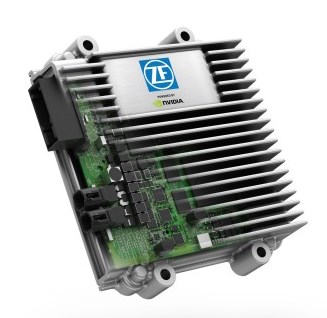A quick peek at the ZF Group website reveals the company posted sales of 29.2 billion EUR in 2015, the company has 230 production facilities in 40 countries around the world.
ZF, one of the industry's largest automotive suppliers and top supplier to Europe's trucking industry, today launched the ZF ProAI self-driving system, based on the NVIDIA DRIVE™ PX 2 AI car computer, for cars, trucks and other commercial vehicles for factories, agriculture and mining.
ZF is the first tier-1 auto supplier to bring an AI self-driving computer based on DRIVE PX 2 into production for commercial availability.
ZF ProAI uses the DRIVE PX 2 AutoCruise configuration to enable companies to build self-driving vehicles -- ranging from cars and trucks, to industrial applications, such as forklifts and materials-handling vehicles.
"With NVIDIA, we are bringing the supercomputing power required for artificial intelligence into cars and commercial vehicles," said Stefan Sommer, chief executive officer of ZF. "ZF is enabling vehicles to see, think and act. NVIDIA's AI platform lets us take a giant leap forward when it comes to enabling vehicles -- whether cars, trucks or forklifts -- to think."
Speaking at ZF's event ahead of the start of CES 2017, Rob Csongor, vice president and general manager of Automotive at NVIDIA, discussed how NVIDIA is working to bring artificial intelligence in deep neural networks to a wide variety of industries.
"It's not an exaggeration when we talk about artificial intelligence as the technology that will spark an industrial revolution," Csongor said. He added that, in transportation, AI promises to reduce traffic fatalities and congestion. "Doing this requires a computational breakthrough and we now have that breakthrough in AI."
ZF ProAI can process inputs from multiple cameras, plus lidar, radar and ultrasonic sensors, in a process called sensor fusion. This will enable the vehicle to paint a 360-degree view around itself, locate itself on an HD map and find a safe path through traffic.
ZF ProAI will be available for production in early 2018.
